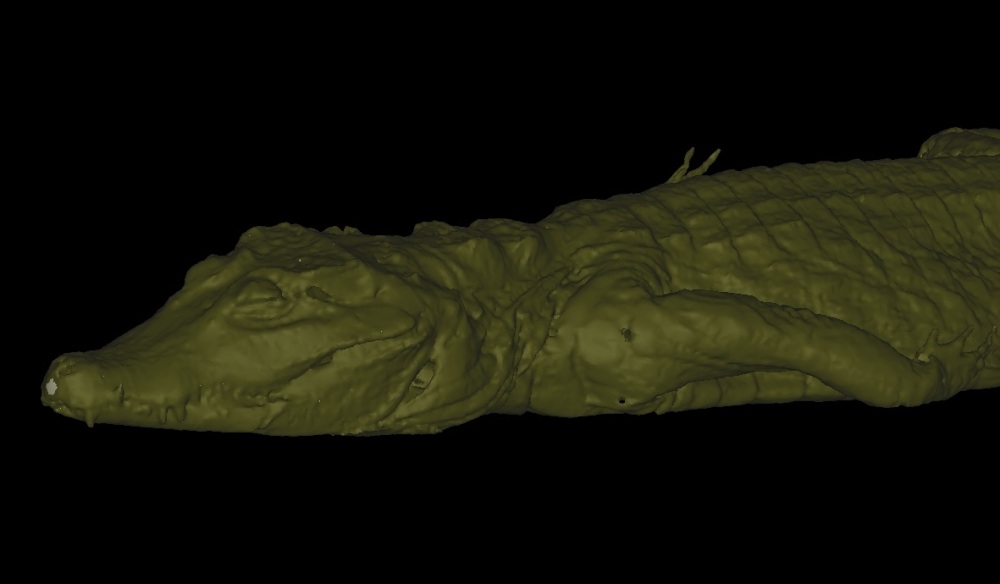We are delighted to announce the launch of the first of several new open access databases from John Hutchinson’s team at the RVC, containing complete CT and MRI scans of almost all our modern crocodile specimens! Our CrocBase is hosted via the Open Science Framework, and contains 53 scan datasets of five crocodilian (AKA crocodylian to scientists) species all available to download now (see full list here). These are from frozen cadavers of Crocodylia that died in captivity. We are excited to open these data up to researchers and members of the public across the world, and to enable further work on and feed curiosity concerning these remarkable animals. The scans are also linked by specimen name and number, as in a properly curated museum database, to skeletal specimens and other information that future researchers and others can benefit from.

Open data sources are starting to multiply across institutions and across the internet. Giants such as FigShare and the Open Science Framework have made millions of data files available for use by researchers and the public. Users can access images, databases and published materials from a huge range of academic fields to enhance and expand and inspire their own work. The nature of anatomical data presents an additional challenge: how to upload and store very large datasets such as CT and MRI scans and 3D models for free and without size restrictions. This has been increasingly recognised as a limitation and there are now several candidates for uploading and storing, including the OSF and MorphoBank, to make these incredibly rich data available for use by people around the world.
With CrocBase, we’re not just opening up our 3D model data, but the entire scans (as DICOM files; a standard format) so they can be used to create new models and answer (and ask!) new questions. Or you can just 3D-print 34 individual crocodiles if you prefer! You don’t need to be a researcher or have any connection to us – we want to share these with everyone! If you fancy building yourself a croc, please do download any of our CT or MRI scans and have a play around with them. There are various free software packages you can use to start off with, including ImageJ/BoneJ, SPIERS and OsiriX, which have online FAQs and tutorials. Many of the scans capture whole animals, though some are divided into different sections where the animals were especially large! We’ve mostly been using our scans to look at the skeleton and its structure, but there are opportunities to look at other aspects of anatomy, too, including muscles and the digestive system, and the possibilities are limitless.

If you do pick your favourite croc and make or discover anything cool, let us know! We’d love to see any models you make, or oddities you might spot in the individual slices, so post a quick link below or tweet at us (@AnatomyToYou). The pictures we’ve included here are just some of our most loved, but there’s lots to choose from. So far, our crocodilian hub contains…
| Species | Number of individuals | Size range (kg) |
| Crocodylus niloticus | 24 | 0.127-298 |
| Crocodylus moreletii | 5 | 9.4-27.7 |
| Osteolaemus tetraspis | 3 | 5.56-10.2 |
| Melanosuchus niger | 1 | 90 |
| Caiman crocodilus | 1 | 2.174 |
You can find the full, detailed list of individual animals and scans at CrocBase. Happy snapping! We thank NERC for funding aspects of this work, and for collaborators Vivian Allen, Julia Molnar, Stephanie Pierce, Colleen Farmer, Emma Schachner and others that have worked on these specimens with us. And last but far from least, we thank La Ferme Aux Crocodiles in France for providing these specimens.
p.s. If you use these scans for research or other ventures, that’s fantastic! Please remember to cite them appropriately – you can find out how at CrocBase on OSF!
One Comment Add yours